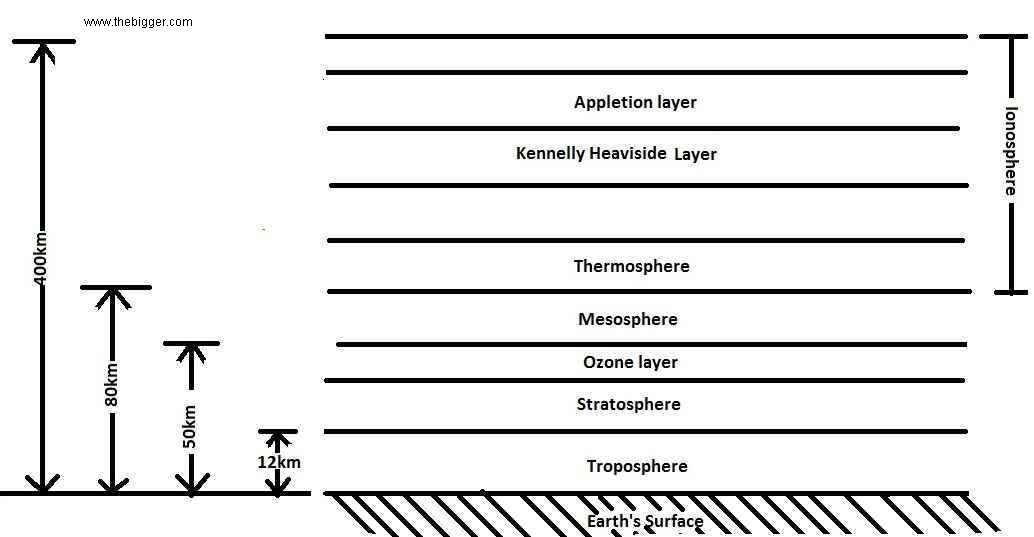The envelope made up of gases which is surrounding our earth is known as atmosphere. There are lot of gases which combine together to form the atmosphere. The major composition of atmosphere is shown below in the table:
|
Gases |
Composition |
|
Oxygen |
21% |
|
Nitrogen |
78% |
|
Carbon-dioxide |
.03% |
|
Other(argon, hydrocarbons, water vapors, dust particles, sulphur compounds, etc) |
0.97% |

Earth’s atmosphere has no fixed boundaries. But it is divided into different regions. There are basically four reasons i.e. Stratosphere, Troposphere, ionosphere and Mesosphere.
1. Troposphere: This region starts from the surface of earth and covers a area of nearly 12 km. As we go higher and higher the temperature of this region decreases. If the density is supposed to be 1. Then the density of air in this reason is nearly one tenth of the actual density.
2. Stratosphere: Where the region of the troposphere finishes, the region of the stratosphere starts. It covers an area of nearly 12km to 50km. In this region major portion of ozone layer is present. The ozone layer has the ability to absorb the most harmful ultraviolet rays coming from the sun. If these rays will reach the earth directly, then skin problems will become common in the living beings. It will also raise the temperature of the earth to larger extent. The temperature range of this region lies between 220k to 280k.
3. Mesosphere: After the stratosphere region, the region of mesosphere starts. It covers an area of nearly 50km to 80km. Temperature range on this region is 280k to 180k.
4. Ionosphere: This region starts from the surface of earth and further extends within range of 80km to 400km. The temperature increases with the increase in height. Its temperature range is nearly 180k to 700k. Due to high temperature it is called as thermosphere.
Due to the ionization process caused by the x-rays and the ultraviolet rays, lot of free electrons and ions are present in this region. This electron layer is called as Kennelly Heaviside layer. The density of electrons decreases beyond this region. Nearly at a height of 250km again this electron layer will be joined. This layer is known as Appleton layer.
Both the Appleton and Heaviside layers have lot of electrons, though these layers have high conductivity.
